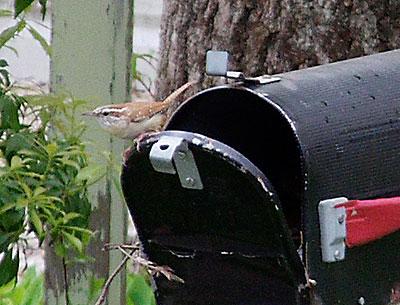Nature Notes: Maddening Millennium

We birders are always looking for the odd bird, not the familiar one. Yet it’s the familiar ones that provide us with the most information, the ones that quiet us down when things go awry, and at this point in civilization, they often do. On Friday, it was the sweet song of the Baltimore oriole heralding his return that set my mind at ease; on Sunday it was the wheezy nonsensical notes of the catbird, gone from my brain since August 2011, that did the same.
What if you woke up one late spring to a nice day but there was no robin tootling, no crow barking, no blue jay braying, no nail-pulling call of the grackle. Wouldn’t you think something was missing, something was a little haywire, something might be going wrong? That happened to Rachel Carson, and a little later on to Ralph Nader. It set them both a-dither.
Even the prolonged absence of the ill-reputed starling and house sparrow would set one’s mind to wonder. Once I asked the late Roger Tory Peterson what we could do about the house sparrows that were interfering with the bluebird nesting trail that I and others were setting up on the South Fork. He just looked at me and questioned back, “It’s a bird, isn’t it?” In other words, it belonged just as much as the other birds, the so-called native ones, which I was preoccupying myself with.
The Carolina wren is one of those birds that I would miss dearly if I didn’t hear its song at least once a week. There were no Carolina wrens around while I was growing up in the 1940s and 1950s on the North Fork. But since I have been living in Noyac, beginning in 1979, I have not failed to hear one singing at least once a week, even in the dead of winter. This little southern fellow is not a migrator. It either makes it through the winter, no matter how mean and nasty it can be, or gives up the ghost. Enough have survived cold, sleet, snow, and ice over the last four decades that it is now one of our most common birds.
How much we missed the osprey when its Long Island population waned to a precious few in the 1960s. When the house finches suffered through a wave of conjunctivitis in the l990s, we were put out. Perhaps no other bird has such a following as the Eurasian mute swans that live on Georgica, Hook, Agawam, and Town Ponds. When one mate is lost it’s as if a president has been assassinated.
Yes, many of us have been complaining that the wild turkeys have overstayed their welcome, but if they suddenly went away, wouldn’t we miss them sorely? We carped at the red foxes when they were high in numbers, but cringed when they caught the mange and almost died off completely. Many of us are happy to see them back, with their glistening coats and nimble movements, head out in front, tail out in back. We curse the deer; they’re driving us mad. But, truthfully, aren’t they beautiful to behold?
In this maddening millennium, many of our favorites are no longer with us. The whippoorwill, hermit thrush, bobwhite, and clapper rail are no rarer than hen’s teeth. When is the last time you saw a weasel or a striped skunk? Little brown bats are plagued with white noses caused by a fungus from abroad.
Maybe we can agree on a few natural and unnatural entities that we wouldn’t mind seeing bite the dust for good. I’m talking about ticks, chiggers, gypsy moths, mosquitoes, no-see-ums, and low-flying jets and helicopters. Hmmm, and maybe some of the politicians.
